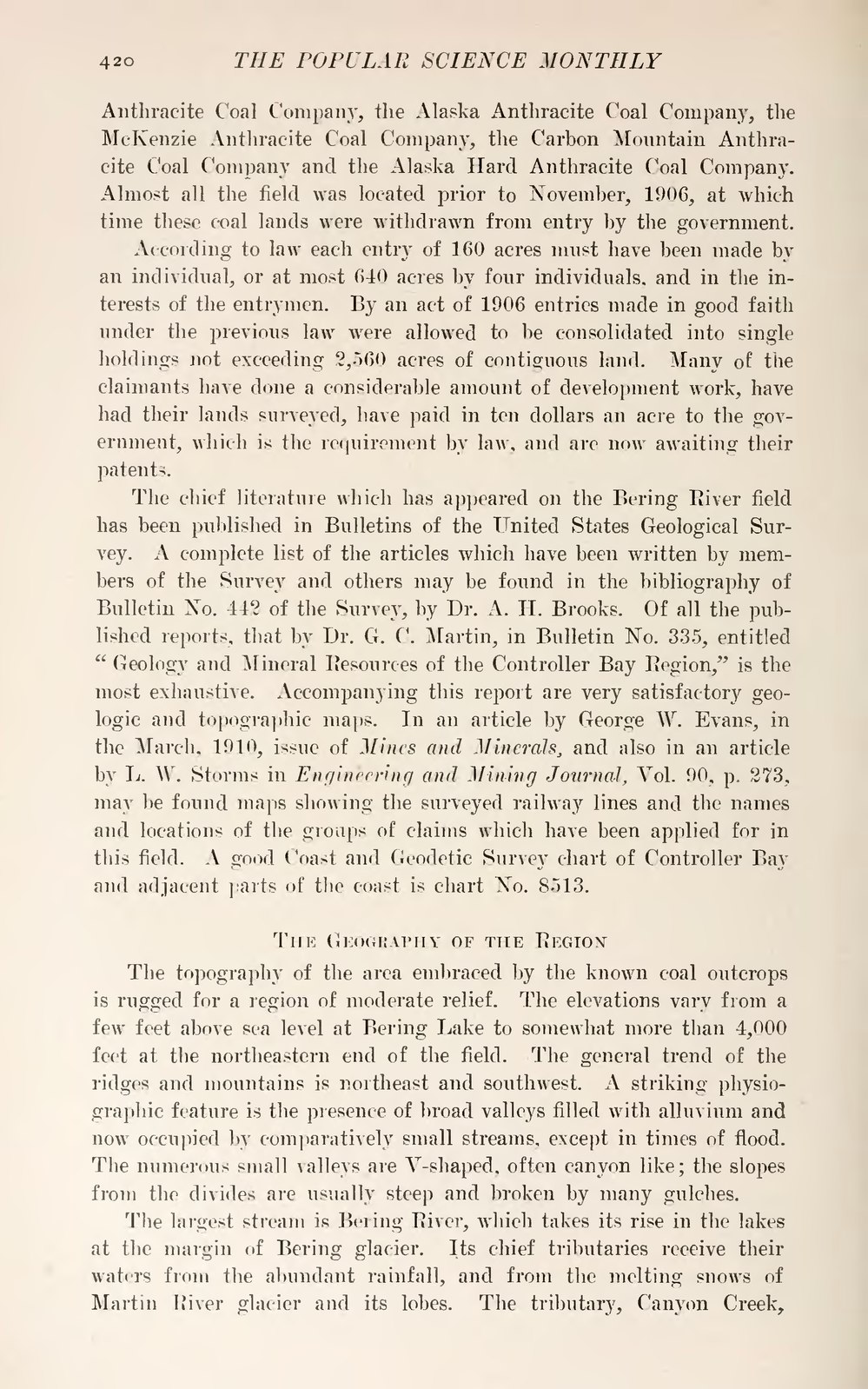Anthracite Coal Company, the Alaska Anthracite Coal Company, the McKenzie Anthracite Coal Company, the Carhon Mountain Anthracite Coal Company and the Alaska Hard Anthracite Coal Company. Almost all the field was located prior to November, 1906, at which time these coal lands were withdrawn from entry by the government.
According to law each entry of 160 acres must have been made by an individual, or at most 640 acres by four individuals, and in the interests of the entrymen. By an act of 1906 entries made in good faith under the previous law were allowed to be consolidated into single holdings not exceeding 2,560 acres of contiguous land. Many of the claimants have done a considerable amount of development work, have had their lands surveyed, have paid in ten dollars an acre to the government, which is the requirement by law, and are now awaiting their patents.
The chief literature which has appeared on the Bering River field has been published in Bulletins of the United States Geological Survey. A complete list of the articles which have been written by members of the Survey and others may be found in the bibliography of Bulletin No. 442 of the Survey, by Dr. A. H. Brooks. Of all the published reports, that by Dr. G. C. Martin, in Bulletin No. 335, entitled "Geology and Mineral Resources of the Controller Bay Region," is the most exhaustive. Accompanying this report are very satisfactory geologic and topographic maps. In an article by George W. Evans, in the March, 1910, issue of Mines and Minerals, and also in an article by L. W. Storms in Engineering and Mining Journal, Vol. 90, p. 273, may be found maps showing the surveyed railway lines and the names and locations of the groups of claims which have been applied for in this field. A good Coast and Geodetic Survey chart of Controller Bay and adjacent parts of the coast is chart No. 8513.
The Geography of the Region
The topography of the area embraced by the known coal outcrops is rugged for a region of moderate relief. The elevations vary from a few feet above sea level at Bering Lake to somewhat more than 4,000 feet at the northeastern end of the field. The general trend of the ridges and mountains is northeast and southwest. A striking physiographic feature is the presence of broad valleys filled with alluvium and now occupied by comparatively small streams, except in times of flood. The numerous small valleys are V-shaped, often canyon like; the slopes from the divides are usually steep and broken by many gulches.
The largest stream is Bering River, which takes its rise in the lakes at the margin of Bering glacier. Its chief tributaries receive their waters from the abundant rainfall, and from the melting snows of Martin River glacier and its lobes. The tributary, Canyon Creek,
